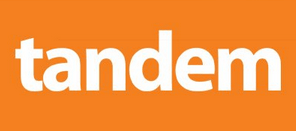Tandem, the Silicon Valley accelerator that focuses exclusively on early-stage investments in mobile startups, is today revealing its fourth and final batch of 2012. The seed fund and accelerator raised its second fund back in June, $32 million, which it uses to seed its startups with $200K convertible notes in exchange for 10 percent equity.
Similar to other accelerators, like Y Combinator and TechStars, for example, Tandem works closely with its founders on everything from design to public relations, offering free work space, daily meetings and business development opportunities. Unlike others of its ilk (beyond only seeding mobile-focused companies), Tandem keeps its batches small — generally two to six teams — in the belief smaller class sizes means better returns and higher success rates and its program is open-ended, meaning that the program “officially” ends after six months but startups can stay on as long as they’d like.
The accelerator has largely flown under the radar, because its companies haven’t raised big, honking follow-on rounds. Nonetheless, its incubations have done fairly well in spite of this. And Tandem co-founder Doug Renert says he hopes that Tandem can be a representation of the new world order in venture capital — less money raised, more direct involvement, bigger returns.
Tandem’s first fund has seen half of its companies gain liquidity, while the six companies that have graduated from Tandem II (the second fund it raised earlier this year) have all raised more money. Its companies have raised $12 million at an enterprise value of $75 million. Tandem II is newer and hasn’t yet had any liquidity events, but BitRhymes (a social game developer which was part of its April batch) alone has passed the $50 million revenue mark at the recent first year anniversary of its initial investment — after raising less than $1 million. In 2012, altogether Tandem incubations are generating over $100 million in annual revenue.
“This is exactly what we like to see,” Renert tells us. “Big venture rounds are not necessary in many cases to reach the knee of the hockey stick. BitRhymes does more in revenue in its first year than most would raise for their series C rounds.” Prepared for the Series A crunch? Sounds like it.
Today, Tandem is adding its newest companies to its six-month accelerator program, starting with Goodo, Light of Hand and one other company still in stealth. The deadline for Tandem’s first class of 2013 is January 2nd. [Those interested can apply here.] This year’s fall class is also the first to be entirely composed of international candidates. For more on Tandem’s most recent (September) batch, find them here.
But without further ado, here’s a look at the accelerator’s final batch of the year:
Goodo is on a mission to transform the mobile calendar, which it believes is in need of a UX facelift. The core team consists of a group of experienced entrepreneurs from Beijing, with the founder and CEO having sold his last company, Sunzip, to China Mobile. Goodo is unique to Tandem in that the incubator co-invested in the company with Unity Ventures, China’s leading early stage startup fund. Goodo is also the first Chinese team to join Tandem’s acceleration program.
Goodo is attempting to reinvent the typical mobile calendar interface, with clean design, stream view, speedy event creation, online/offline functionality, cloud backup and GCal sync, among other things.
Light of Hand is building a next-generation card-collecting game platform, following on the success of its fantasy card collecting game, The Warlords, which attracted four million total users, one million monthly active users and 200,000 daily active users across Facebook and Myspace. Light of Hand hails from Pune, India and brings an eight-person team to Silicon Valley.
Tandem’s third incubation for the fall class still remains in stealth and will be officially announced in the coming weeks.
These three teams were selected from “hundreds of applicants, based on their product execution capability, entrepreneurial drive and the size of the business opportunity,” Renert says, and each continues with product tests and tweaks, “officially” releasing their apps in early 2013.
